
Clan Campbell is a Highland Scottish clan, historically one of the largest and most powerful of the Highland clans. The Clan Campbell lands are in Argyll and within their lands lies Ben Cruachan. The chief of the clan became Earl of Argyll and later Duke of Argyll.

Duke of Argyll is a title created in the peerage of Scotland in 1701 and in the peerage of the United Kingdom in 1892. The earls, marquesses, and dukes of Argyll were for several centuries among the most powerful noble families in Scotland. As such, they played a major role in Scottish history throughout the 16th, 17th, and 18th centuries. The Duke of Argyll also holds the hereditary titles of chief of Clan Campbell and Master of the Household of Scotland.
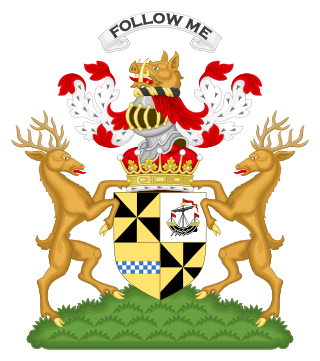
Earl of Breadalbane and Holland is a title in the Peerage of Scotland. It was created in 1681 for Sir John Campbell, 5th Baronet, of Glenorchy, who had previously been deprived of the title Earl of Caithness.

Kilchurn Castle is a ruined structure on a rocky peninsula at the northeastern end of Loch Awe, in Argyll and Bute, Scotland. It was first constructed in the mid-15th century as the base of the Campbells of Glenorchy, who extended both the castle and their territory in the area over the next 150 years. After the Campbells became Earls of Breadalbane and moved to Taymouth Castle, Kilchurn fell out of use and was in ruins by 1770. It is now in the care of Historic Environment Scotland and is open to the public in summer.
Colin Campbell may refer to:
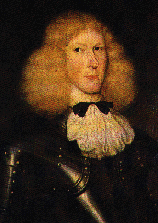
Robert Campbell, 5th Laird of Glenlyon, was a minor member of Scottish nobility and is best known as one of the commanding officers at the Massacre of Glencoe.

John Campbell, 1st Earl of Breadalbane and Holland, known as Sir John Campbell, 5th Baronet from 1670 to 1681, was a member of Scottish nobility during the Glorious Revolution and Jacobite risings and also known as "Slippery John". An astutely political man, Campbell was one of the men implicated in the Massacre of Glencoe.

Taymouth Castle is situated to the north-east of the village of Kenmore, Perth and Kinross, in the Highlands of Scotland, in an estate which encompasses 450 acres (180 ha). It lies on the south bank of the River Tay, about 1 mile (1.6 km) from Loch Tay, in the heartland of the Grampian Mountains. Taymouth is bordered on two sides by mountain ranges, by Loch Tay on the third and by the confluence of the rivers Lyon and Tay on the fourth.
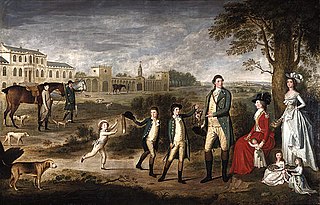
There have been five baronetcies of the United Kingdom created for a person with the surname Erskine, two in the Baronetage of Nova Scotia, one in the Baronetage of Great Britain and two in the Baronetage of the United Kingdom. Two of the creations are extant as of 2010.

There have been four baronetcies created for persons with the surname Hope, three in the Baronetage of Nova Scotia and one in the Baronetage of the United Kingdom. As of 2010 one creation is extant, one dormant and two extinct.

The Campbell of Auchinbreck family was founded by Duncan Campbell in Glassary, Argyll, Scotland. He was the son of Lord Duncan Campbell, first Lord Campbell of the Clan Campbell, by his second wife Margaret, daughter of Sir John Stewart of Blackhall, the illegitimate son of King Robert III of Scotland. The family of the Lords Campbell later became Dukes of Argyll, and remain chiefs of Clan Campbell. Duncan Campbell, as a grandson of King Robert III, received a considerable estate confirmed by royal charter dated 19 June 1452. The family remained at their estate of Auchinbreck, from which they took their title, until 1641. The Campbells of Auchinbreck were commissioned to provide military training and were used by the Earls of Argyll as military support. In 1628 the then head of the family of Campbells in Auchinbreck received a baronetcy, which included a grant of North American land in Nova Scotia.

Lieutenant-General John Campbell, 1st Marquess of Breadalbane FRS, known as John Campbell until 1782 and as The Earl of Breadalbane and Holland between 1782 and 1831, was a Scottish soldier and landowner.
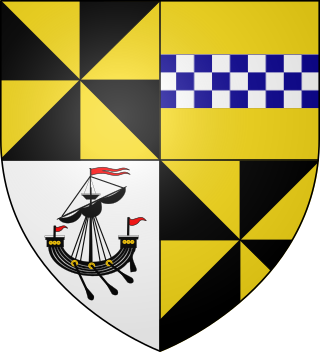
Sir Colin Campbell, 2nd Baronet of Glenorchy (c.1577–1640) was a Scottish nobleman, 8th Laird of Glenorchy, known as a patron of the arts.
Before the Acts of Union 1707, the barons of the shire or sheriffdom of Argyll elected commissioners to represent them in the unicameral Parliament of Scotland and in the Convention of the Estates. The number of commissioners was increased from two to three in 1693.
Sir Charles Erskine, 1st Baronet, of Alva, Fife, was a Scottish politician who sat in the Scottish Conventions in 1665 and 1667 and in the Parliament of Scotland from 1689 to 1690.

Sir Duncan Campbell, 1st Baronet of Glenorchy (1545-1631) was a powerful Clan Campbell chieftain, landowner, courtier and favourite of Queen Anne of Denmark. He was the progenitor of the Earls of Breadalbane and Holland.

Sir Robert Campbell, 3rd Baronet of Glenorchy was a Scottish nobleman and landowner, the 9th Laird of Glenorchy and Glenfalloch.
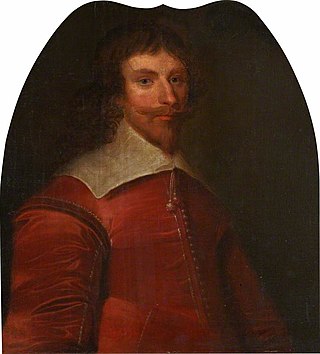
Sir John Campbell, 4th Baronet of Glenorchy was a Scottish nobleman and the father of John Campbell, 1st Earl of Breadalbane, a notorious political leader implicated in the Massacre of Glencoe.
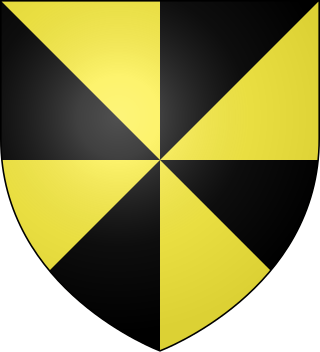
The Campbell baronetcy, of Lundy in the County of Forfar, was created in the Baronetage of Nova Scotia on 13 December 1627 for Colin Campbell. He was the son of Colin Campbell of Lundie, younger son of Colin Campbell, 6th Earl of Argyll. The title became dormant on the death of the second Baronet in c. 1696. The title is later believed to have been vested in Archibald Campbell, 1st Duke of Argyll, and his descendants: Cockayne makes this a tentative suggestion.
![<span class="mw-page-title-main">Sir James Campbell, 5th Baronet</span> Scottish Jacobite[1] politician and landowner](https://upload.wikimedia.org/wikipedia/commons/thumb/f/fe/Campbell_of_Auchinbreck_arms.svg/320px-Campbell_of_Auchinbreck_arms.svg.png)
Sir James Campbell of Auchinbreck, 5th Baronet was a Scottish Jacobite politician and landowner. He was Lord Commissioner of Justiciary for the Highlands between 1701 and 1711, and Member of Parliament for Argyllshire between 1703 and 1707. Considered a prominent Argyll laird, the fortune of the Campbells of Auchinbreck had however deteriorated since 1685.
















